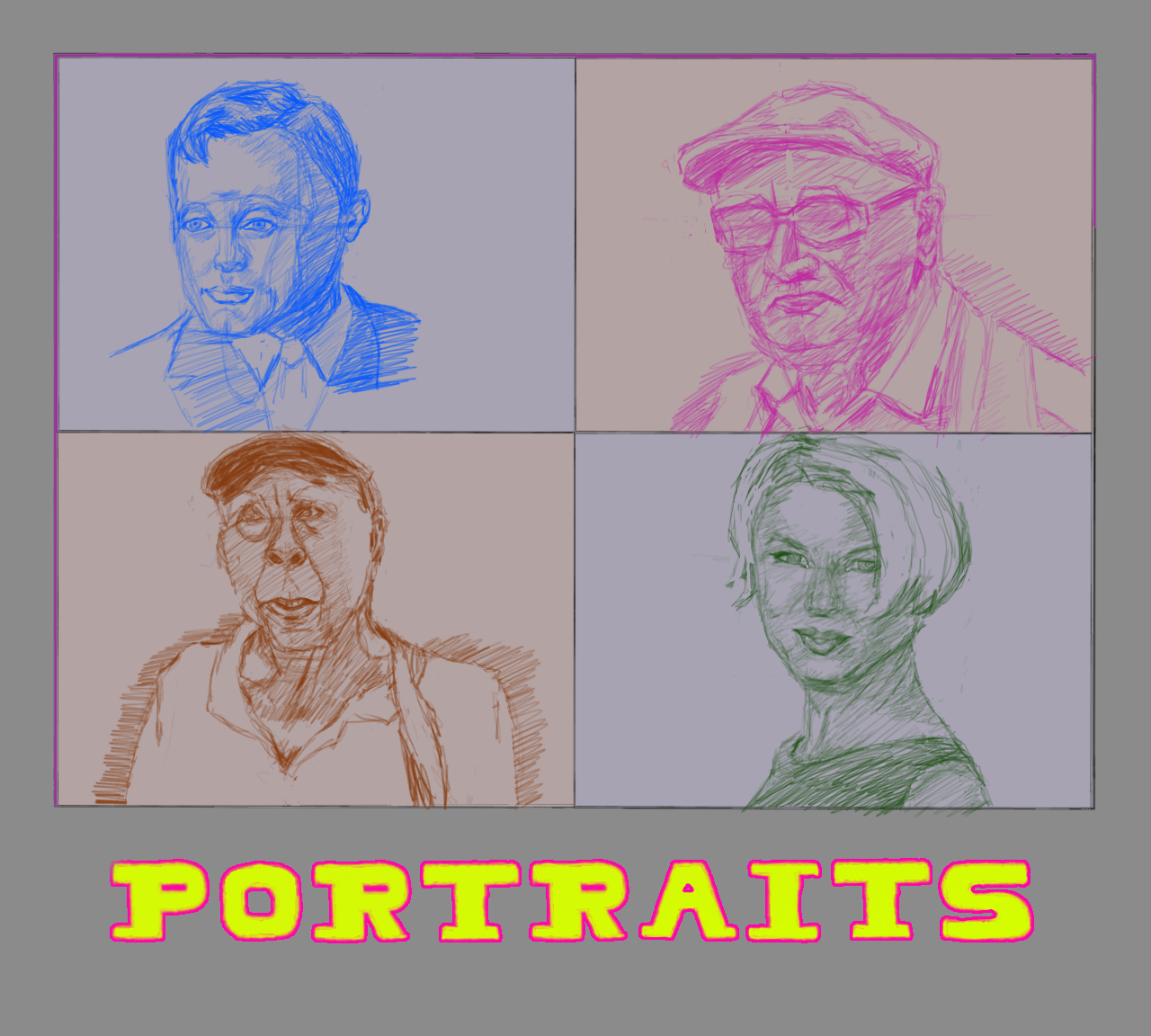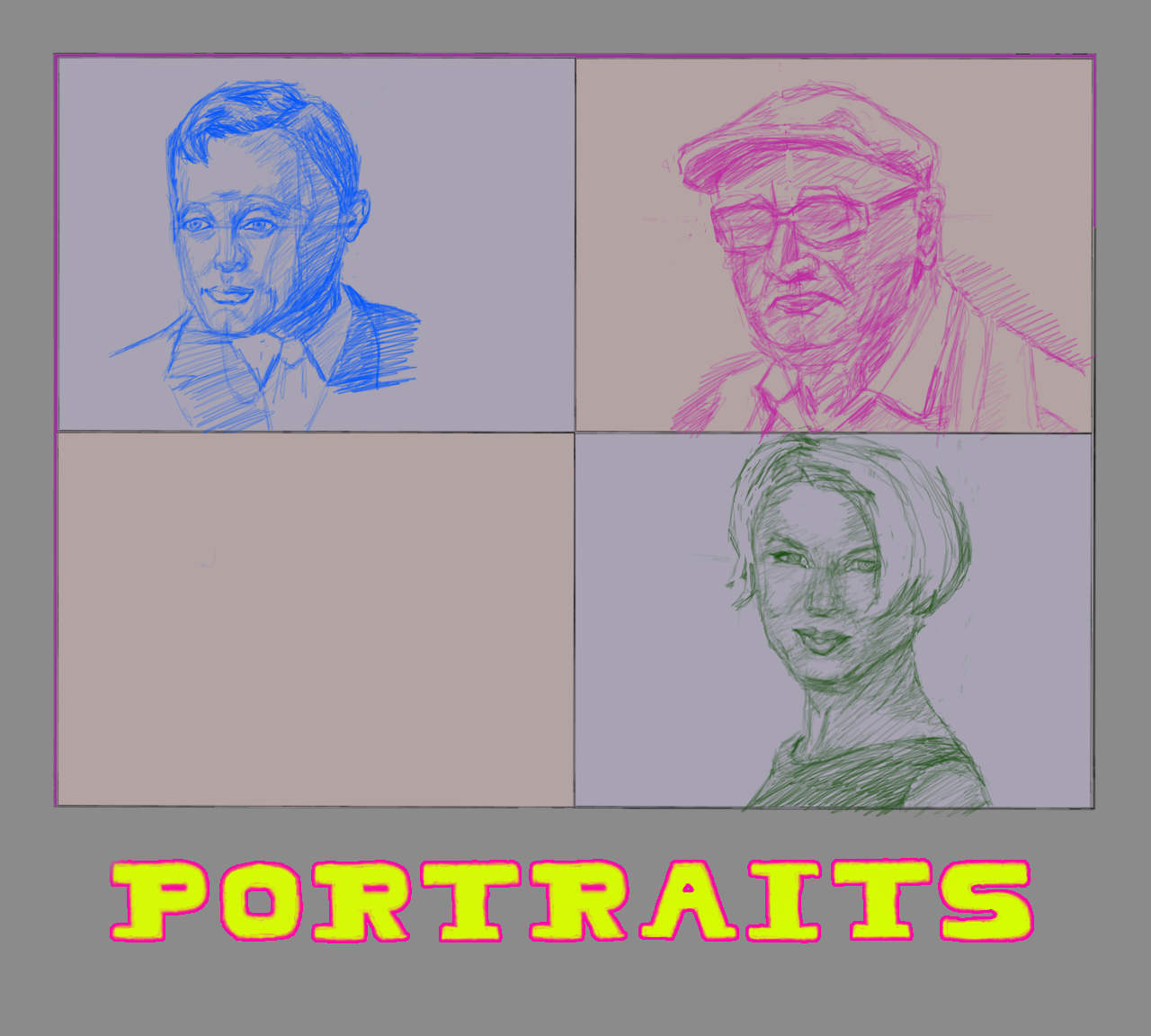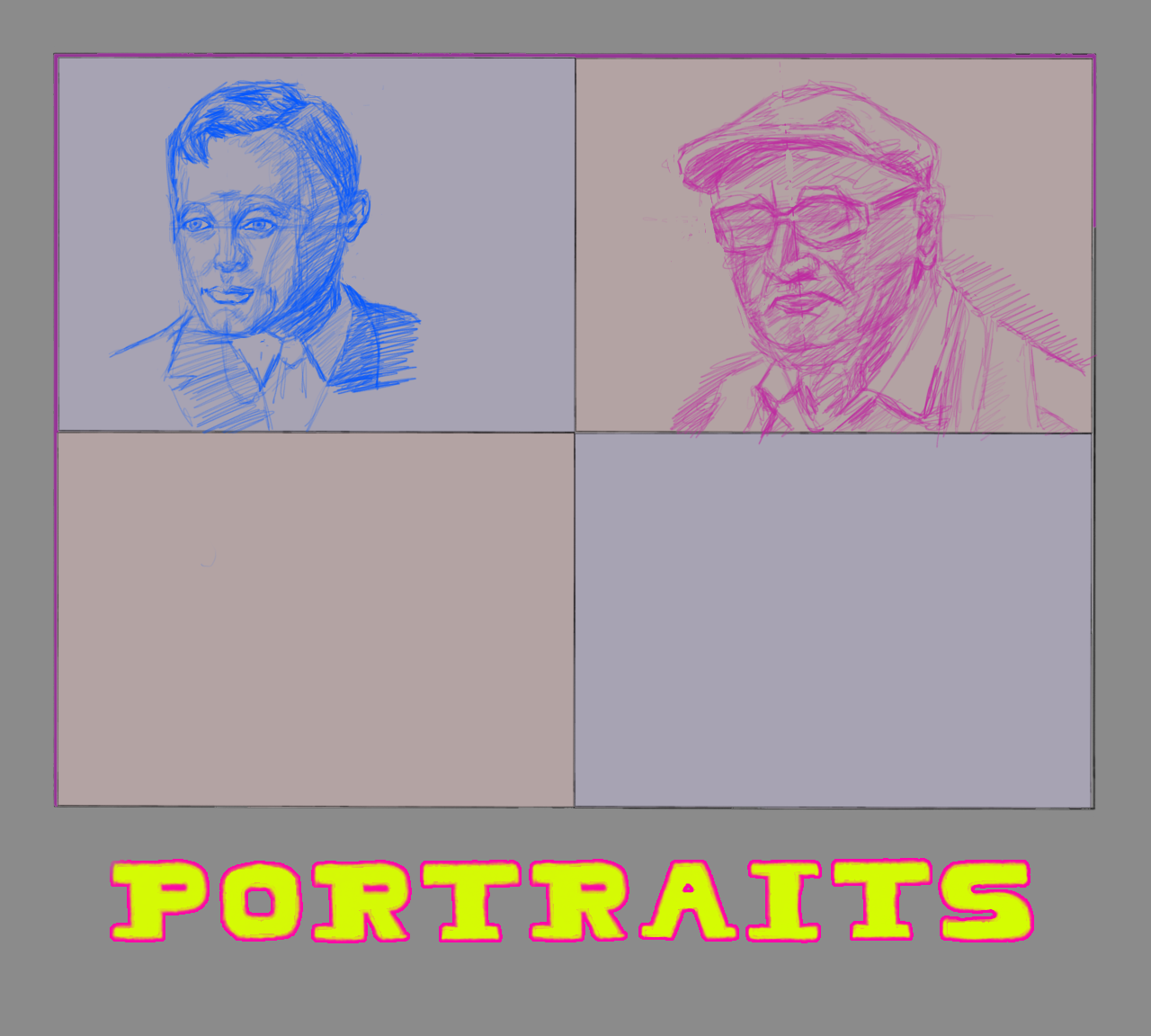-
I can now see what my weaknesses are, and what I need to focus on. I try to copy what I see, instead of drawing what I know, informed by what I see. IOW, simplify and then elaborate by adding details, big to small. So how will things improve?

four quick portrait sketches from the past three days -
Apparently, in 2024 out of the 70,000 inhabitants of my hometown, only 56 people (8 in 10,000) started in the Marathon Rotterdam. Nationwide that’s 17,000 marathon runners out of 18,000,000 people (9 in 10,000). While running is on the rise since COVID19, the marathon is still a niche distance.
-
I know I’m drawing photo’s of heads instead of heads, but it’s a start. This time I drew the woman upside down, as to get less confused by my brain seeing meaning instead of shapes. Shapes I can draw, their meaning not so much.

the bottom right is a blond-haired woman -
Guessing proportions by eye seems still elusive. I guess drawing simpler objects would help here.

today's portrait is top right and represents a senior wearing a hat and sunglasses -
I suppose there’s no good replacement for solid practice and going through bad drawings before anything worthwhile appears. Also, that hour went by quicker than I thought. Now if I only had a lighter tough…

my attempt at Robert Vaughn as Napoleon Solo in The Man from U.N.C.L.E. -
Even the first ten steps of a forty-steps process proved to be too complicated and requires more practice with each step, separate from drawing faces. This is going to take a long time to get good at, let alone master it.

quick portrait sketches
process video of above drawing -
I’m trying to draw somewhat realistic portraits from photos. I found a 40-step tutorial, with each step requiring measuring and, frankly, a study on its own. I always had problems measuring angles and comparing distances, due to my glasses. A straight line turns into a curved line, and so on.
-
If you admire someone’s work, are awed by it, be very, very careful. You might be taken advantage of. Always try to find flaws, and if you can’t, you might have fallen into the trap of stupidity, as described by Dietrich Bonhoeffer observing the rise of Naziism. Once stupid, you’re hopelessly lost 😱
-
Without the tyranny of reality it gets much easier for me to draw people, though the stylized version is less convincing than a realistic art style. I need to find a middle ground, and then nudge it into more realistic.

stylized version of a runner
process video of above drawing -
Apparently, a digitally zoomed in photo isn’t a good reference, and can lead to “imaginative” rendering by the artist. I did a lot of pre-drawing exercises to get rid of too much anxiety to finish quickly. Still, it’s rushed, not very deliberate. The more I try to calm down the more anxious I get.

-
After a little practice with lines and drawing contours from observation I can already see improvement in my drawing from a photo. I see the underlying structure and draw that, instead of the photo itself.

upper body sketch of smiling runner
process video of above drawing -
I’ve gone back to the Udemy course The Ultimate Drawing Course. Drawing fundamentals are essential and to be studied regularly.
I can see I need more practice.

practice sheet with all kinds of lines and a few blind contour drawings from observation -
Drawing from direct observation is hard, especially on an iPad. It feels all clumsy and unnatural. While having the object in front of me, I’m mostly looking at the iPad screen, drawing wobbly lines. Those latter I should fix first, I guess.

somewhat drawn from direct observation -
I guess one can take drawing from photos only so far. At some point real life observations are needed to improve artistically. Much like practicing in front of a mirror requires an audience at some point to become convincing.

quick sketch confirming I need to draw from life instead of photos -
Quick sketch from a photo I took in 2017.

full-body sketch of runner in a casual pose wearing sunglasses
process video of above drawing -
I suppose doing these daily line drawings brings me closer to my goal of a realistic drawing. I should get looser, though.

quick sketch of a runner, partially obscured in the reference
process video of above drawing -
It’s clear to me that I need to slow down, considerably. It takes time to observe and interpret what your eyes take in. 28 minutes is just too short, but it’s progress.

quick sketch from photo
process video of above drawing -
After commenting with a pixel art version based on a sketch in ibisPaint X, I refined it, and put it in its own post. I can see what to improve upon, yet the general idea is there. AI alt description confirms it. Some learning to do now.

slightly more elaborate version of the original -
Despite an injury I developed after my half marathon race two weeks ago, I’m going to run a marathon next Sunday. I already know what went wrong (lack of specific strength), and how to prevent it next time—I need to do the supplementary exercises I used to do, like hops and jumps, and running up a stair, several steps at a time, besides the usual exercises like crunches, planks, lunges and push-ups.
So, in order to not stress my body too much, I lowered my expectations for the upcoming marathon race, by starting at a 4:30 hours pace (6:20 min/km, 10:11 min/mi), and perhaps speeding up after the 35 km mark. It’s a sound strategy, provided the injury is cured (enough). I replaced running by bicycling a week ago.
I suppose I’m (re)learning by making mistakes. I really can’t fault myself, because the trainer I’m paying my track & field club for has never materialized. There’s someone, but he’s only interested in faster runners at shorter distances (3 to 10 km). Maybe I should hire a coach, though that’s rather costly, even an online coach or an app like Runna. Doing it all yourself is unnecessarily hard.
🏃♂️👈42.2 km👉🏃♂️➡️
-
I’m a bit rusty after so many months of not drawing, so I needed a few weeks to be able to share something I’m not too embarrassed about. I know, it’s silly, because so few read this blog. The drawing is made on an iPad Pro (4th gen, 11 inch), using ibisPaint and an Apple Pencil. 🖌️